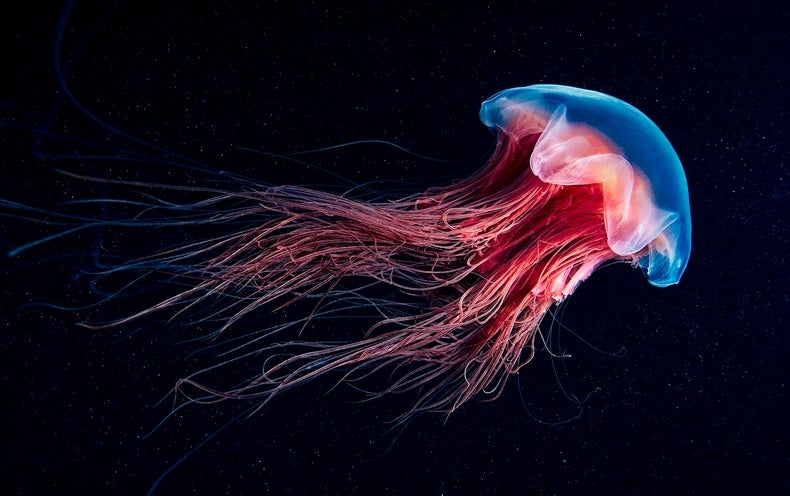
In the enigmatic depths of the ocean, where sunlight surrenders to perpetual darkness, a remarkable discovery has illuminated the scientific community. A team of intrepid researchers has stumbled upon a novel species of deep-sea jellyfish, adorned with an extraordinary trait—bioluminescent arms. This groundbreaking finding has cast new light on the captivating biodiversity of the marine realm.In the enigmatic depths of the ocean, where sunlight surrenders to perpetual darkness, a remarkable discovery has illuminated the scientific community. A team of intrepid researchers has stumbled upon a novel species of deep-sea jellyfish, adorned with an extraordinary trait—bioluminescent arms. This groundbreaking finding has cast new light on the captivating biodiversity of the marine realm. Named after its ethereal glow, the jellyfish, Atolla luminae, inhabits the dimly lit waters of the North Pacific Ocean. Unlike other jellyfish species, Atolla luminae possesses exceptionally long arms that trail behind its bell-shaped body like celestial ribbons. These arms are not merely passive appendages; they are imbued with a mesmerizing ability to emit a brilliant blue light. Through a series of meticulous experiments, scientists determined that the jellyfish’s bioluminescence serves a dual purpose. Firstly, the vibrant blue light serves as a defensive mechanism, startling predators and diverting their attention away from the jellyfish’s vulnerable body. Secondly, the light acts as a beacon for potential mates, attracting them from far and wide in the vast undersea abyss. Intriguingly, Atolla luminae exhibits a unique pattern of bioluminescent displays. When threatened, the jellyfish emits short, rapid flashes of light that create a dazzling distraction. During courtship, however, the jellyfish engages in a more elaborate performance, producing rhythmic pulses of light that beckon and allure potential partners. The discovery of Atolla luminae has not only expanded our knowledge of marine biodiversity but has also ignited a surge of questions about its biology and ecology. Scientists are eagerly investigating the specific chemical compounds responsible for the jellyfish’s bioluminescence and exploring the role it plays in its survival and reproduction. Furthermore, the identification of this new species highlights the immense value of exploring the deep sea, an environment that remains largely unexplored and holds countless secrets waiting to be unveiled. The discovery of Atolla luminae serves as a reminder of the boundless wonders that lie beneath the waves and the importance of continued oceanographic research.
Posted inNews